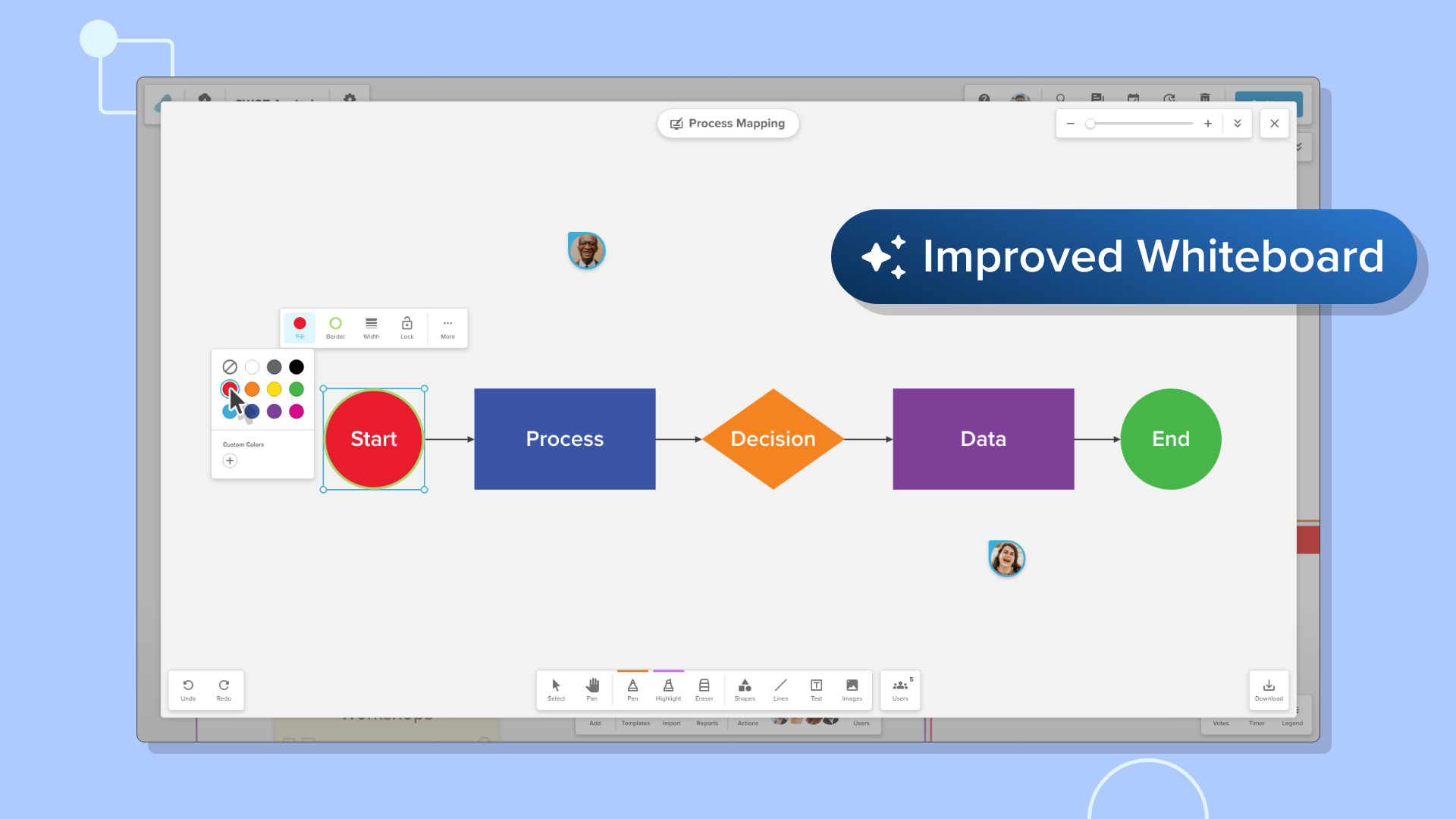Why Your Organization Needs Digital Workflow Automation
Image from Pexels
Picture a factory from the early 20th century. All the workers are busy, but it's a slow and inefficient process - with many machines that need to be manually operated, there is little room for production optimization or scalability.
Now imagine this same factory in the 21st century: all the machines are connected and running automatically, adjusting in real-time to optimize their output. This is what digital workflow automation can do for businesses today. It takes a manual, labor-intensive process and turns it into an efficient, automated series of tasks that streamlines operations and reduces costs while increasing productivity.
Automation has proven to reduce costs by 24%, however, only 6% of companies feel ready to address Artificial Intelligence (AI). This is due to the challenges involved in bolstering IT, ensuring your workforce has the skills to engage with automation, and integrating automation into existing day-to-day operations.
In this article, we'll explore how digital workflow automation can help to improve efficiency and productivity, while also addressing the challenges of implementation.
What is a Digital Workflow
A digital workflow is an automated process that moves data, documents, and tasks through a system using algorithms to determine the best way to complete each step. Think of it like a conveyor belt in a factory: inputs come into the system, they are processed according to predetermined rules, then they are sent on their way toward the next step of the process. By automating these steps, organizations can eliminate manual labor and reduce human error while increasing efficiency.
There are a few different types of workflows that can be used, including
Sequential Workflow: A linear process, with each step dependent on the completion of the previous one.
Parallel Workflow: This allows multiple tasks to be performed at once, allowing for faster processing speeds and better scalability.
Event-Driven Workflow: Using triggers or events to start and stop processes, event-driven automation can help organizations respond quickly to changes in their environment or customer needs.
State Machine Workflow: A state machine workflow uses a series of states and transitions to move data or tasks through the system. This type of automation is useful for tasks that require complex decision-making or handling exceptions.
Rule-Driven Workflow: Rule-driven workflows use an automated set of rules to determine the next steps in a process. It helps organizations ensure that tasks are completed according to established guidelines or regulations.
Benefits of Workflow Automation
The benefits of workflow automation are numerous. Automation can save time, money, and resources by eliminating the need for manual labor. Employees report that automation could save them over 240 hours a year.
It also helps to ensure accuracy and consistency across processes, reducing errors that can lead to costly mistakes. 90% of workplace accidents are due to human error, so bringing in AI to deal with repetitive tasks can have a huge impact on the number of issues a company is having.
Additionally, it allows organizations to quickly adapt to changing conditions or new regulations without having to manually re-design their workflows from scratch each time something changes.
Workflow automation is not just about saving time and money; it can also help improve customer service by increasing response times and providing more accurate information. By automating repetitive tasks such as data entry, your organization will be able to devote more attention to customer inquiries and provide more personal service.
Digital Workflow Best Practices
While the benefits of automation are clear, with widely increased work workforce capacity and efficiency, if your team is not engaged with the automation you won’t see any improvements. That’s why you need to design your digital workflow with the employees in mind. Here are some best practices to consider to make sure your automation is used and effective.
Get Feedback from Employees
If people help to design something, they are much more likely to use it. That’s why touching base with your employees about what they want out of automation is paramount.
Ask questions (or leverage a designated brainstorming space) to gain insight into:
What is something employees don’t like about the current workflow?
What causes difficulties or delays in the current process?
Where do employees notice the most errors happening?
What improvements would make employee jobs easier?
Having a space where your team feels they can collaboratively share this feedback will make it much easier to implement your automation tools.
Focus on Integration With the Current Workflow
If the new processes you bring forward require your employees to learn too many new tools or input data into multiple databases, they won’t engage with them. You need to ensure that the new tools are in harmony with the current systems. Advancing digital integration doesn’t mean re-inventing the wheel, but rather finding a harmonious balance in existing and new processes.
For example, Stormboard has built-in integrations with the systems you already use - like Microsoft Teams, Google Suite, Zapier, and more. This prevents a loss of momentum and duplicate work.
Optimization and Analysis
Fine-tuning your workflow is a must if you want to reap the most benefits. Continue to provide channels for your employees to bring forward issues, and use analytics to identify any bottlenecks that need addressing.
Keep Things Simple and Visual
It should be easy for people to refer back to the workflow, and easy enough to understand that it doesn’t slow momentum. Visualizing your process can be a great way to make it easy for everyone to understand and follow the steps.
Stormboard uses sticky notes on an infinite whiteboard, so you can move tasks around easily, comment and collaborate in real-time from anywhere, and have a bird’s eye view of the workflow. By utilizing our hundreds of templates and unique data-centric interface, your organization can visually plot out everything from a simple checklist of automations all the way through to a detailed flowchart of even the most complex processes.
Empower Employees With Automation
No one wants to feel like they are expendable or replaced by machines. That’s why automation should empower employees rather than replace them. This means that employees need to be involved in any decisions about automation tools and processes, while also having the opportunity to develop skills in those tools.
Make Automation Easily Accessible
To be successful, digital workflow automation needs to be easily accessible by everyone involved in the process. This means creating user-friendly systems and having enough buy-in from employees that they’ll use them without resistance.
It also means offering training on how to use these systems so that everyone is comfortable with them before implementation starts. Additionally, make sure you are consistently updating any automated processes as needed to ensure maximum efficiency.
How to Implement a Digital Workflow
Digital transformation takes time, and having a clearly laid out strategy is the best way to make sure you stay on track. Here are some ideas to help get you started on digitization.
Know What You Want to Digitize
Observe your current systems and identify areas that could benefit most from automation. Anything repetitive and labor-intensive such as sorting, labeling, or filing digital documents is a great choice.
For example, processes like generating, curating, and archiving data can be automated to allow employees more time to interpret and act on that data.
Create Workflow Maps
Just like you need a plan for your overall digital transformation, you will need a laid-out plan for how each workflow will operate. These should be visual and easy to manipulate while in the brainstorming stage so that you can identify any errors and ensure that your automation will cover every step in the process.
Digitize your Paper
Paper archives and filing systems can be a major drag on productivity. Digitizing documents and files is an essential part of automation and can help you keep track of important documents with speed and accuracy.
This also makes it easier to share information with other departments or remote teams, no matter where they are located.
Keep Roles and Permissions Clear
When automating a workflow, it’s important to assign specific roles and permissions that define who has access to what data. This helps ensure the accuracy and security of information, as well as allows for the proper delegation of tasks across teams.
The more you rely on digital systems, the more critical digital security becomes. Make sure the tools you use value security as much as you do. Stormboard boasts complete SOC 2 compliance, two-factor identification, and optional single-tenant data residency, so you can rest assured your data is safe.
Measure Your Success
Once your systems are in place, you can measure success by looking at both quantitative (such as time saved) and qualitative (such as improved customer satisfaction) metrics.
These measurements will help you determine if automation is working for your organization, or if there are other areas where improvement is needed.
The Bottom Line
As we've seen, automating workflows can help companies save time and money while increasing efficiency. Just as cars on an assembly line move through various stations in a factory with little human intervention, Stormboard helps to streamline digital workflow processes so that tasks move quickly from start to finish without hindrance or delays.
By taking advantage of this tool's collaborative features and integration capabilities, businesses can unlock their full potential and create powerful workflows that enable them to get more done in less time than ever before.
In short: if you want your business operations to run like a well-oiled machine, Stormboard is the way to go!
Digital transformation all starts with a plan.
Stormboard is leveraged by organizations of all sizes for everything from the initial planning of their digital transformation strategy all the way through execution and task management.
Click the button below to schedule a no-obligation product walk-through to learn where Stormboard fits into your organization’s digital transformation strategy.
About the author:
A programmer by trade, Nick Saraev is a freelance writer and entrepreneur with a penchant for helping people excel in their careers. He's been featured on Popular Mechanics & Apple News, and has founded several successful companies in e-commerce, marketing, and artificial intelligence. When he's not working on his latest project, you can find him hiking or painting.










